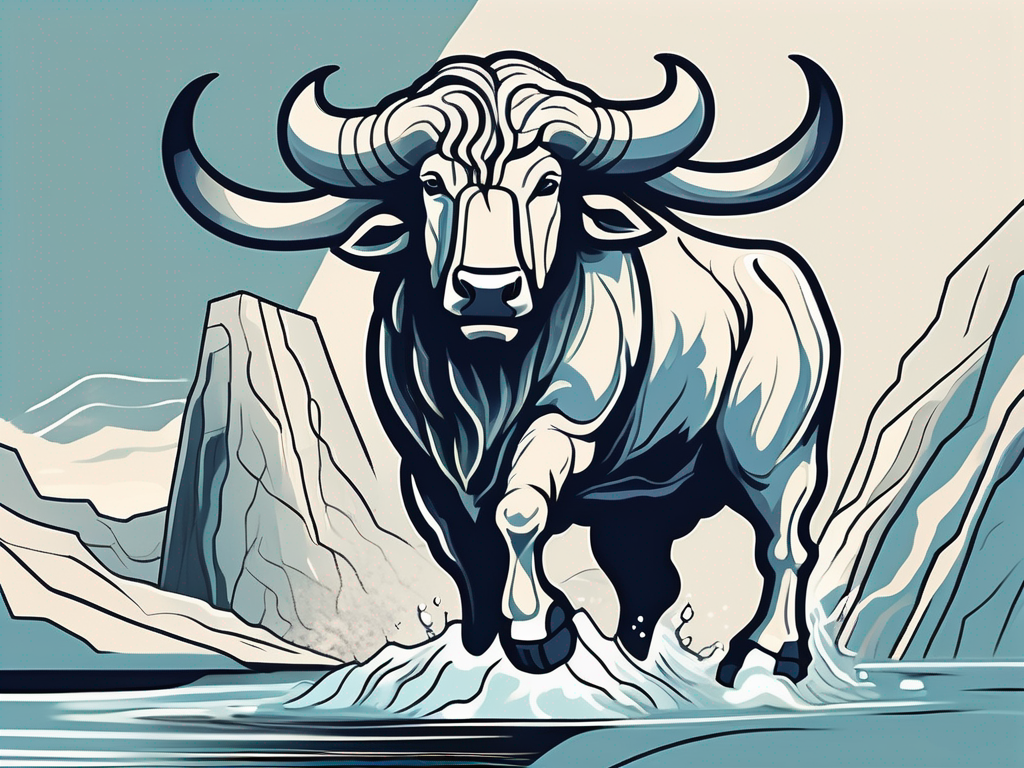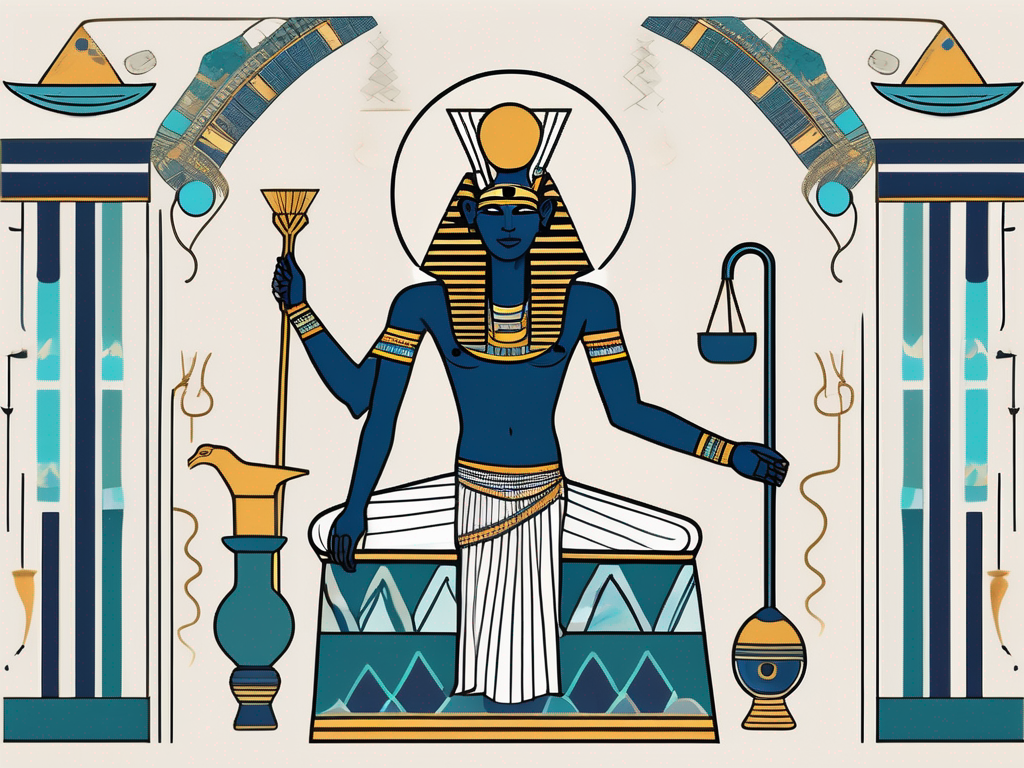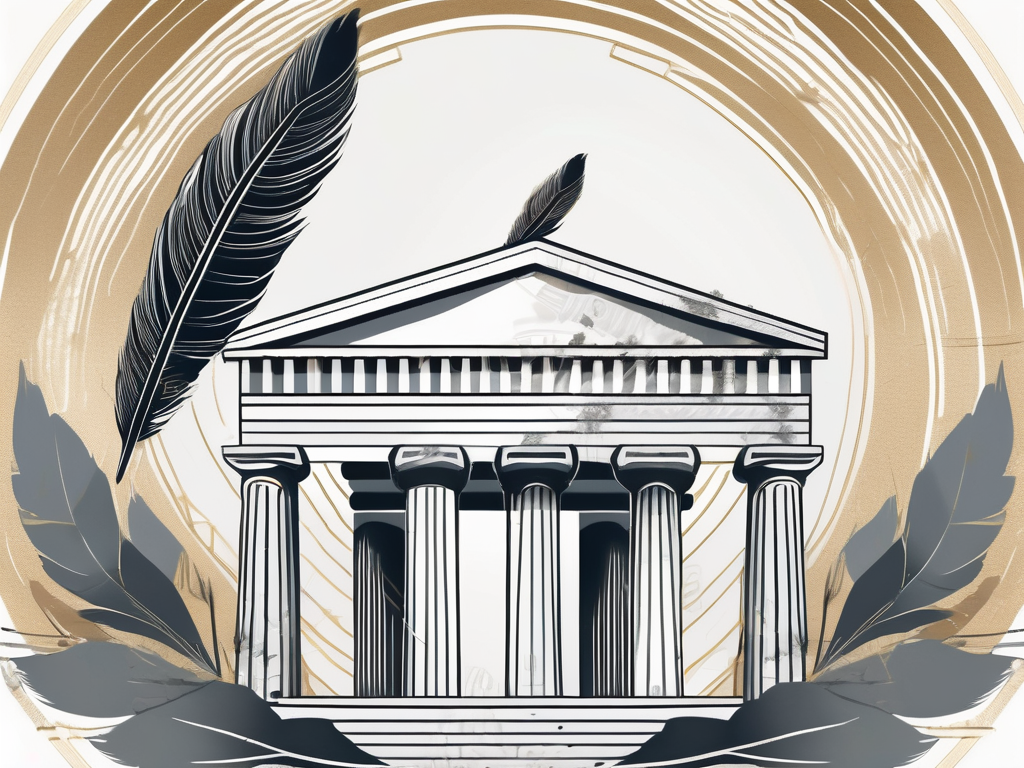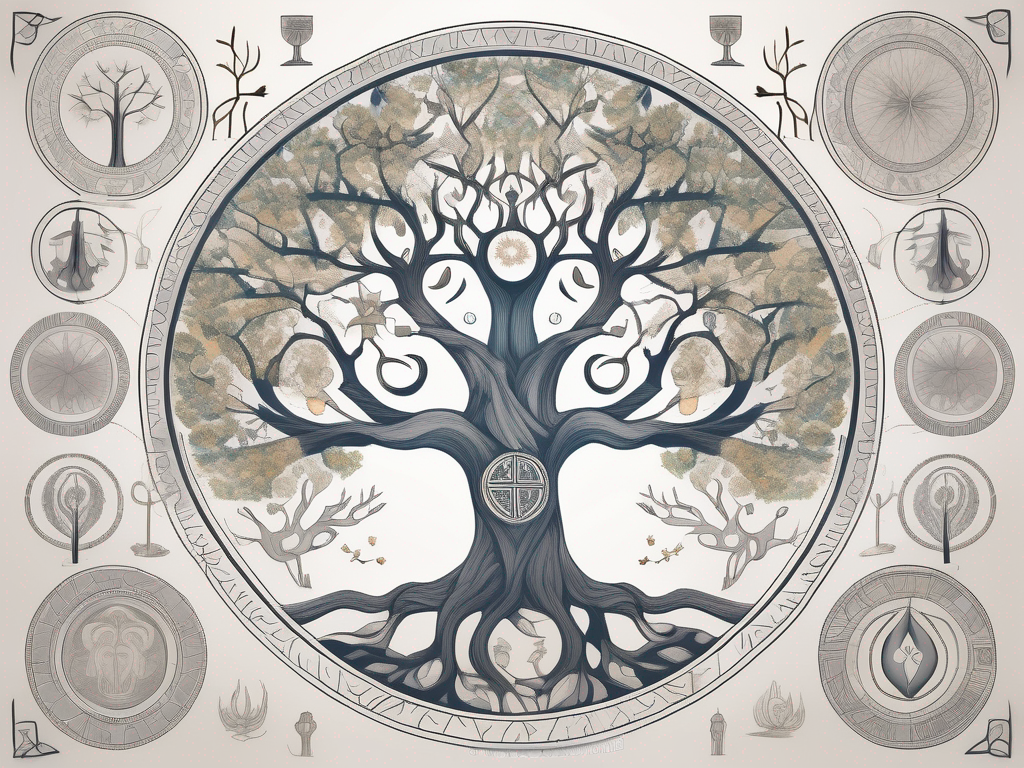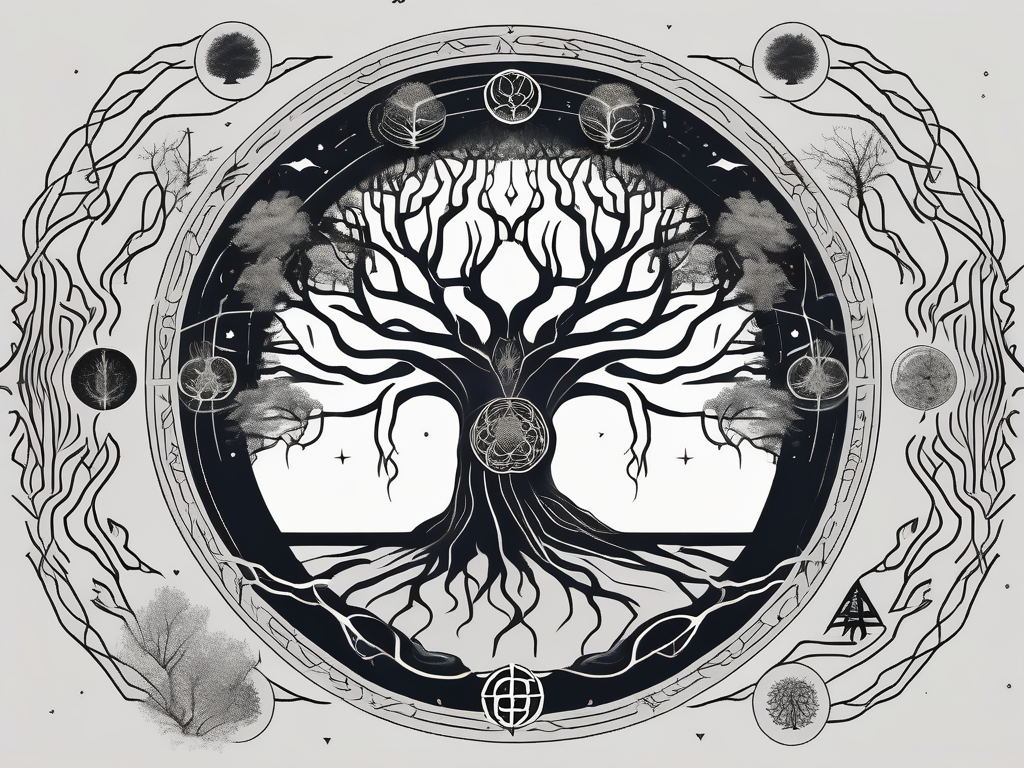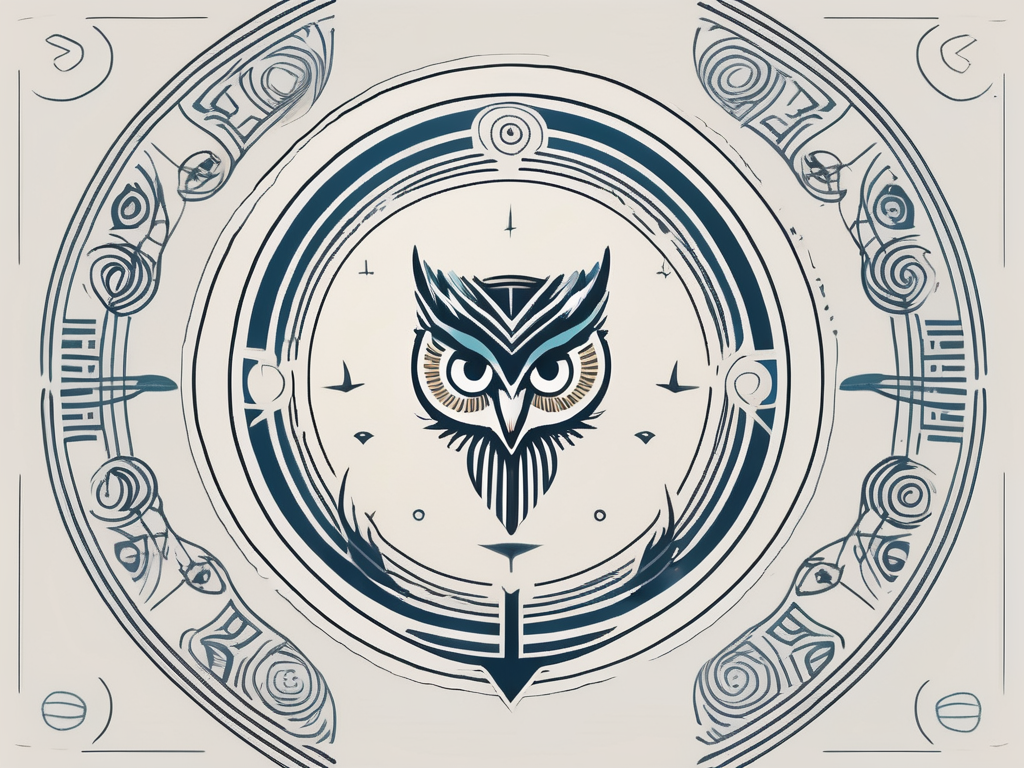Greek mythology is filled with fascinating and powerful gods, each with their own unique stories and abilities. One such deity is Achelous, a god associated with water sources and rivers. In this article, we will delve into the mythology surrounding Achelous, examining his role in Greek culture, his powers, and his enduring influence even today.
Understanding the Role of Achelous in Greek Mythology
The Origin of Achelous: A Brief Overview
Like many Greek gods, Achelous has a mythical and captivating origin story. According to ancient texts, he was the son of Oceanus and Tethys, making him a primordial deity associated with the vast waters of the world. Achelous is often depicted as a strong and muscular being, half-human and half-bull, representing his connection to both mankind and nature.
As the son of Oceanus and Tethys, Achelous inherited immense power and authority over the waters. He was believed to control the flow of rivers, the crashing of waves, and the formation of lakes and springs. This made him a vital figure in Greek mythology, as water was seen as the source of life and a symbol of fertility.
Legend has it that Achelous was not only a powerful god but also a shape-shifter. He had the ability to transform himself into various forms, including a serpent, a bull, and even a river. This shape-shifting ability allowed him to adapt to different situations and interact with mortals in a way that suited his purpose.
Achelous in Greek Literature and Art
Achelous’ presence can be found in numerous works of Greek literature and art. He is often portrayed as a wise and powerful god who offers guidance to heroes and mortals. In famous epics such as Homer’s Odyssey, Achelous is mentioned as a revered figure, highlighting his importance within the Greek pantheon.
In addition to his role in literature, Achelous is a popular subject in Greek art. Many ancient sculptures and paintings depict him in various forms, capturing his dual nature as both a bull and a human. These artistic representations often emphasize his strength and regal presence, showcasing his significance in Greek mythology.
One notable depiction of Achelous can be found in the famous metope sculptures of the Temple of Zeus at Olympia. These sculptures depict the battle between Achelous and the hero Hercules, who sought to win the hand of the beautiful Deianira. The scene captures the intense struggle between the two powerful beings, showcasing Achelous’ formidable strength and determination.
Furthermore, Achelous’ influence extends beyond literature and art. He was also worshipped in various regions of ancient Greece, particularly in areas where water was abundant and vital for agriculture. Temples and sanctuaries were dedicated to him, and rituals were performed to honor his power and seek his blessings for bountiful harvests.
The Powers and Symbols Associated with Achelous
Achelous, the ancient Greek river god, is known for his extraordinary powers and symbolic artifacts. His legends and myths have captivated the imaginations of people for centuries, as they explore the depths of his shape-shifting abilities and the significance of his horn.
The Shape-Shifting Ability of Achelous
One of Achelous’ most notable abilities is his capacity to shape-shift into various forms. This transformation ability allows him to adapt to different situations and interact with both humans and gods. From a fierce bull to a graceful serpent, Achelous’ shape-shifting powers capture the awe and wonder of those who witness his transformations.
When Achelous takes the form of a bull, his massive size and strength evoke a sense of power and dominance. It is said that he can charge through the land, causing earthquakes and shaping the landscape with his mighty hooves. In this form, he symbolizes fertility and abundance, as bulls were often associated with agricultural prosperity.
On the other hand, when Achelous transforms into a serpent, he embodies grace and agility. His serpentine body glides through the water with ease, symbolizing his connection to rivers and streams. As a serpent, he is often depicted with a crown of water lilies on his head, representing his dominion over aquatic life and his role as a guardian of water sources.
The Horn of Achelous: Symbolism and Significance
Another symbol associated with Achelous is his horn, a powerful artifact with deep symbolism. Legend has it that the horn was broken off during a fierce battle with Heracles, the renowned Greek hero. This horn is said to possess magical properties and has been coveted throughout the ages for its supposed ability to grant prosperity and fertility. Many ancient cultures regarded it as a powerful talisman.
The horn of Achelous is often depicted as a magnificent spiral-shaped object, reminiscent of a river’s flow. It is believed to hold the essence of the river god’s power and wisdom. Those who possess the horn are said to gain insight into the mysteries of nature and the cycles of life.
In ancient rituals, the horn of Achelous was used as a ceremonial object, symbolizing the union of water and earth. It was often filled with sacred water and used to bless crops, ensuring a bountiful harvest. The horn’s association with fertility and abundance made it a sought-after artifact among those seeking prosperity and well-being.
Throughout history, the horn of Achelous has been the subject of many legends and tales. It is said that those who possess the horn are granted protection and guidance from the river god himself. Its mesmerizing beauty and mythical powers continue to inspire awe and reverence in those who encounter it.
The Myths and Legends Surrounding Achelous
Achelous, the ancient Greek river god, is the subject of numerous captivating myths and legends. These tales explore the god’s encounters with mortals, his struggles for love, and the tragic consequences that follow. Let us delve deeper into the fascinating stories surrounding Achelous.
Achelous and the Battle with Heracles
One of the most famous myths surrounding Achelous is his encounter with the mighty Heracles. The two engaged in an intense struggle for the hand of Deianeira, a mortal woman of exceptional beauty and grace. Achelous, known for his shapeshifting abilities, transformed himself into various awe-inspiring forms in an attempt to win her over.
However, Heracles, renowned for his unmatched strength and valor, proved to be a formidable opponent. With sheer determination, he managed to overpower Achelous, breaking off one of the river god’s majestic horns. This act symbolized Heracles’ superior strength and emerged as a testament to his unwavering power.
Achelous and the Nymphs: A Tale of Love and Loss
In another captivating myth, Achelous becomes entangled in a tragic love story with the enchanting nymphs. Known for his charm and allure, the river god effortlessly captures the hearts of the beautiful water nymphs, who are drawn to his divine presence and irresistible charisma.
However, Achelous’ love for the nymphs ultimately leads to their heartbreaking demise. As the river god’s affection for them grows, he unknowingly becomes the catalyst for their transformation into islands in the river. Forever separated from their beloved Achelous, the nymphs exist as solitary landmasses, serving as a poignant reminder of the consequences that love can sometimes bring.
These captivating myths and legends surrounding Achelous offer glimpses into the complexities of the ancient Greek pantheon. They explore themes of love, power, and the tragic consequences of divine encounters with mortals. Achelous, with his shapeshifting abilities and allure, continues to captivate the imaginations of those who delve into the rich tapestry of Greek mythology.
The Worship and Cult of Achelous
Ancient Rituals and Practices
Achelous was worshipped in various regions throughout ancient Greece, particularly in areas rich in rivers and water sources. The cult of Achelous involved rituals and ceremonies dedicated to appeasing the god and seeking his blessings. These rituals often involved sacrifices and offerings, as well as prayers for safe passage across the treacherous waters.
Achelous’ Influence on Modern Culture and Religion
Even in modern times, the influence of Achelous can still be felt. His associations with water, fertility, and transformation continue to hold significance in various cultures. The idea of a powerful river god who can shape-shift has found its place in literature, art, and popular culture, inspiring countless stories and characters that echo his timeless legacy.
Analyzing the Character of Achelous: From God to River
Achelous as a God: His Role and Influence
As a god, Achelous represents the essential forces of nature, particularly the life-giving qualities of water and fertility. He embodies the cycle of transformation and the ever-changing nature of existence. Achelous’ role in Greek mythology showcases the power and complexity of the gods, revealing the intricate relationship between divinity and humanity.
Achelous as a River: The Transformation and its Meaning
In addition to his godly form, Achelous is also known as a river personified. His transformation from a deity into an actual river symbolizes the fluidity of life and the eternal flow of time. The river represents the ever-changing nature of the world and the cyclical patterns that govern existence.
In conclusion, Achelous stands as a captivating and enigmatic figure within Greek mythology. From his origins as a powerful god associated with water sources and rivers to his shape-shifting abilities and compelling myths, Achelous continues to capture the imagination of both ancient and modern audiences. Whether worshipped in ancient rituals or revered through his enduring influence on art and culture, Achelous remains an integral part of Greek mythology, reminding us of the profound connection between mankind and nature.
